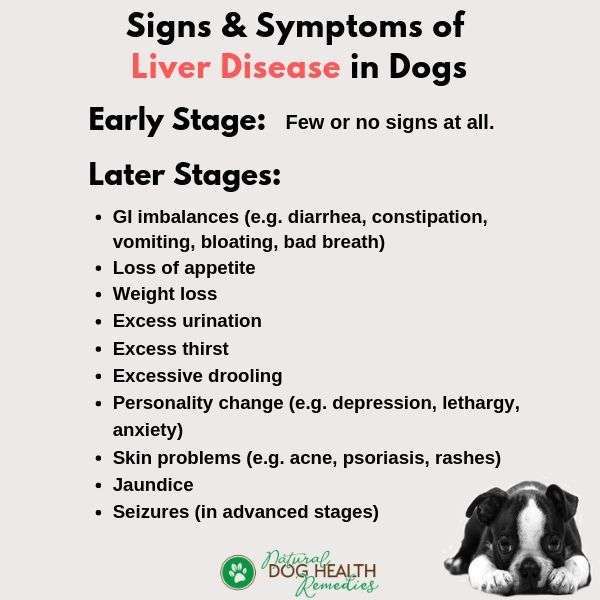Key Takeaways:
- Ascites in dogs refers to the abnormal accumulation of fluid in the abdominal cavity.
- It can be caused by various underlying conditions such as liver disease, heart failure, or cancer.
- Symptoms of ascites may include abdominal distension, difficulty breathing, and decreased appetite.
- A thorough physical examination and diagnostic tests are necessary to determine the underlying cause of ascites.
- Treatment options for ascites depend on the underlying cause and may involve medication, dietary changes, or surgical intervention.
Are you a dog lover? If so, then understanding the topic of ascites in dogs is essential for your furry friend's well-being. Ascites, also known as abdominal effusion, is a condition where fluid accumulates in the abdomen, causing discomfort and potential health complications for our canine companions. By delving into this subject, you will gain valuable insights into how to identify and manage ascites in dogs, ensuring their happiness and longevity. So, let's explore this important topic together and become knowledgeable advocates for our beloved pets' health.
What is Ascites in Dogs and How Does it Affect Their Health?
Ascites is a medical condition in dogs characterized by the abnormal accumulation of fluid in the abdominal cavity. This fluid buildup can put pressure on the organs, leading to discomfort and potential health complications. The most common cause of ascites in dogs is liver disease, but it can also be caused by heart disease, kidney problems, or certain types of cancer.
When a dog has ascites, their abdomen may appear swollen or distended. This can make them feel uncomfortable and lethargic. The excess fluid can also affect their breathing and digestion. If left untreated, ascites can lead to further complications and even be life-threatening for the dog.
How Does Ascites Affect Dog's Organs?
The accumulation of fluid in the abdominal cavity due to ascites puts pressure on the organs within this space. This pressure can interfere with their normal functioning and cause various health issues. For example, when the liver is affected by ascites, it may not be able to perform its essential functions properly, such as detoxifying the blood or producing important proteins. Similarly, if the heart is affected by ascites, it may struggle to pump blood effectively throughout the body.
The Impact on Breathing
When there is excessive fluid in the abdomen due to ascites, it can push against the diaphragm—a muscle responsible for breathing—and restrict its movement. This restriction makes it harder for dogs with ascites to breathe properly. They may experience shortness of breath or rapid breathing.
The Impact on Digestion
The presence of excess fluid in the abdominal cavity can also impact a dog's digestive system. It can compress the stomach and intestines, leading to reduced appetite and difficulty digesting food properly. Dogs with ascites may experience nausea, vomiting, and diarrhea.
Overall, ascites can have a significant impact on a dog's health and well-being. It is important to seek veterinary care if you suspect your dog may have this condition to ensure proper diagnosis and treatment.
Common Causes of Ascites in Dogs and How Veterinarians Diagnose It
There are several common causes of ascites in dogs, including liver disease, heart disease, kidney problems, and certain types of cancer. Liver disease is the most frequent cause, with conditions such as cirrhosis or hepatitis leading to fluid accumulation in the abdomen.
To diagnose ascites in dogs, veterinarians will perform a thorough physical examination and may conduct various diagnostic tests. These tests may include:
1. Abdominal Ultrasound: An ultrasound uses sound waves to create images of the organs within the abdomen. This can help identify any fluid buildup and determine the underlying cause.
2. Blood Tests: Blood tests can provide valuable information about liver function, kidney function, and overall health. Elevated liver enzymes or abnormal kidney values may indicate the presence of ascites.
3. X-rays or Radiographs: X-rays can help visualize any changes in organ size or position that may be indicative of ascites.
4. Fluid Analysis: If fluid is present in the abdomen, a sample may be taken for analysis. This can help determine the composition of the fluid and identify any infections or cancerous cells.
By performing these diagnostic procedures, veterinarians can accurately diagnose ascites and determine its underlying cause. This information is crucial for developing an appropriate treatment plan for the affected dog.
Recognizing Symptoms of Ascites in Dogs at Home
As a pet owner, it is essential to be vigilant about your dog's health and recognize potential signs of ascites. Some common symptoms to look out for include:
1. Abdominal Distention: The abdomen appears swollen or distended, giving the dog a bloated appearance.
2. Lethargy and Weakness: Dogs with ascites may seem tired, lack energy, or have difficulty performing their usual activities.
3. Difficulty Breathing: Rapid breathing, shortness of breath, or increased effort while breathing can be signs of fluid accumulation in the abdomen affecting the diaphragm.
4. Loss of Appetite: Dogs with ascites may experience a reduced appetite or show disinterest in food.
5. Vomiting and Diarrhea: The presence of excess fluid in the abdominal cavity can cause digestive issues such as vomiting or diarrhea.
If you notice any of these symptoms in your dog, it is important to consult a veterinarian for a proper diagnosis. Early detection and treatment can help improve your dog's prognosis and overall quality of life.
Are Certain Dog Breeds More Prone to Developing Ascites?
While ascites can occur in dogs of any breed, certain breeds may be more prone to developing this condition due to genetic predispositions or specific health conditions commonly seen within those breeds. Some examples include:
1. Labrador Retrievers: This breed is more susceptible to developing liver diseases such as hepatitis or cirrhosis, which can lead to ascites.
2. Cavalier King Charles Spaniels: They are prone to heart disease called mitral valve disease that can result in fluid accumulation in the abdomen.
3. Boxers: Boxers have an increased risk of developing certain types of cancer that can cause ascites, such as lymphoma or hemangiosarcoma.
It is important to note that while these breeds may have an increased risk, ascites can still occur in dogs of other breeds or mixed breeds. Regular veterinary check-ups and early detection are key factors in managing and treating ascites regardless of breed.
Treating Ascites in Dogs: Available Options
The treatment approach for ascites in dogs depends on the underlying cause and severity of the condition. Some common treatment options include:
1. Medications: Veterinarians may prescribe diuretics, which are medications that help remove excess fluid from the body through increased urine production. These medications can help reduce fluid accumulation in the abdomen.
2. Dietary Changes: A specialized diet low in sodium may be recommended to help manage ascites and reduce fluid retention.
3. Paracentesis: In severe cases, where there is a large amount of fluid buildup causing discomfort or breathing difficulties, a procedure called paracentesis may be performed. This involves draining the excess fluid from the abdomen using a needle or catheter.
4. Treating Underlying Conditions: If ascites is caused by an underlying condition such as liver disease or heart disease, treating that condition will be crucial for managing and resolving ascites.
It is important to work closely with your veterinarian to determine the most appropriate treatment plan for your dog's specific situation. Regular follow-up appointments and monitoring will also be necessary to assess their response to treatment and make any necessary adjustments.
Preventing and Managing Ascites in Dogs for Better Well-being
While it may not always be possible to prevent ascites, there are steps you can take to promote better overall health and potentially reduce the risk of developing this condition:
1. Regular Veterinary Check-ups: Routine check-ups allow veterinarians to detect any early signs of underlying conditions that could lead to ascites.
2. Vaccinations: Keeping your dog up-to-date on vaccinations helps protect them against infectious diseases that can contribute to liver or heart problems.
3. Balanced Diet: Feeding your dog a balanced diet appropriate for their age, breed, and health needs can support optimal organ function and overall well-being.
4. Exercise: Regular exercise helps maintain healthy weight, promotes good circulation, and supports organ health.
5. Limiting Toxins: Minimize your dog's exposure to toxins such as certain medications, household chemicals, or plants that can be harmful to their liver or other organs.
By being proactive in your dog's healthcare and taking preventive measures, you can help manage their overall well-being and potentially reduce the risk of developing ascites.
In conclusion, ascites in dogs is a condition where fluid accumulates in the abdomen. It can be caused by various underlying health issues and requires prompt veterinary attention for proper diagnosis and treatment.
How long does a dog live with ascites?
Individuals diagnosed with ascites had a much shorter lifespan (approximately 0.4 months) compared to those without ascites (approximately 24.3 months) after their initial diagnosis. Furthermore, the dogs with ascites had a shorter survival time (approximately two months) after signs of chronic hepatitis were first observed compared to those without ascites (approximately 33 months).
Can a dog survive ascites?
Dogs with ascites may be prescribed medications and given a specialized diet to aid in their recovery. The success of these treatments will determine the overall outcome. If the ascites is successfully resolved but the underlying issue remains untreated, the ascites may come back.
How serious is ascites in dogs?
While ascites may not always be caused by a life-threatening condition, it can often be a strong indicator of a poor outcome, particularly in older dogs and those with a cancer diagnosis. It is crucial to never disregard a distended abdomen in a dog, as it could be a symptom of a serious illness.
What are the last stages of ascites?
In advanced cirrhosis, ascites leads to symptoms such as a swollen abdomen, feelings of nausea and vomiting, a quick feeling of fullness after eating, difficulty breathing, swelling in the legs, and decreased ability to move. In a clinical examination, a doctor can detect ascites by examining a distended abdomen, tapping the sides to check for a dull sound, and checking for changes in sound when the patient changes position.
Does ascites mean end-stage?
Individuals with abnormal liver function who experience symptoms such as ascites, variceal hemorrhage, hepatic encephalopathy, or renal impairment are classified as having end-stage liver disease (ESLD).
What is the life expectancy after ascites diagnosis?
Even individuals who are able to walk and have cirrhotic ascites have a 3-year mortality rate of 50%. Patients with resistant ascites have a survival rate of less than 50% after one year. There are numerous research studies available that provide evidence-based strategies for managing patients with ascites.

















